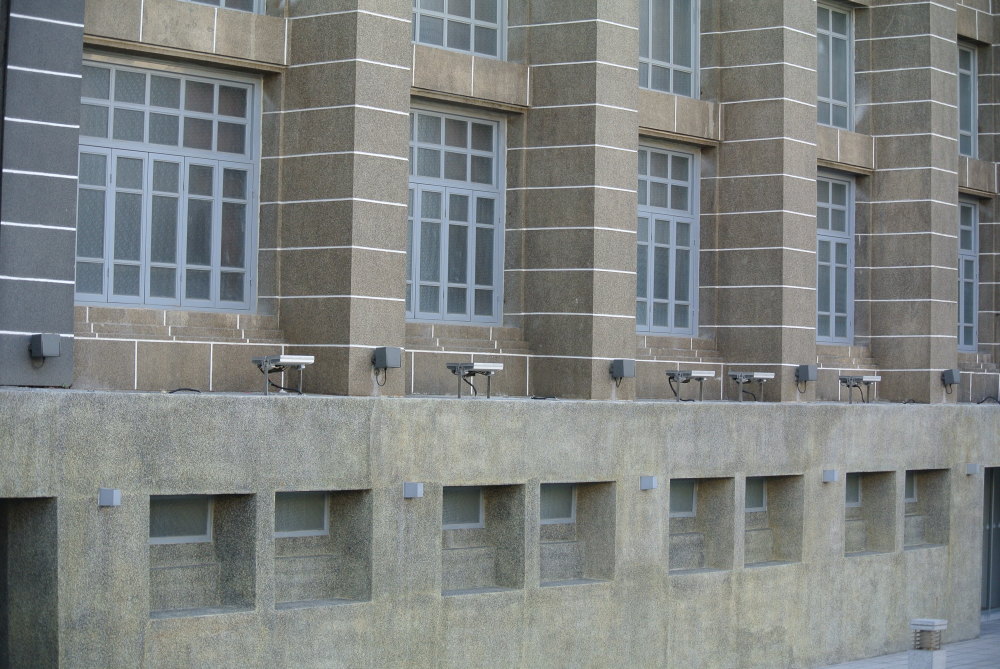
Fascist brutalism, Grand Postal Building Bangkok, 1940
I popped over to the Central Post Office on Charoen Krung because somebody said it had had a facelift. It’s now called the Grand Postal Building. It’s the site of the first post office in Thailand, established in 1883, on what used to be called New Road, the first paved road in the city.
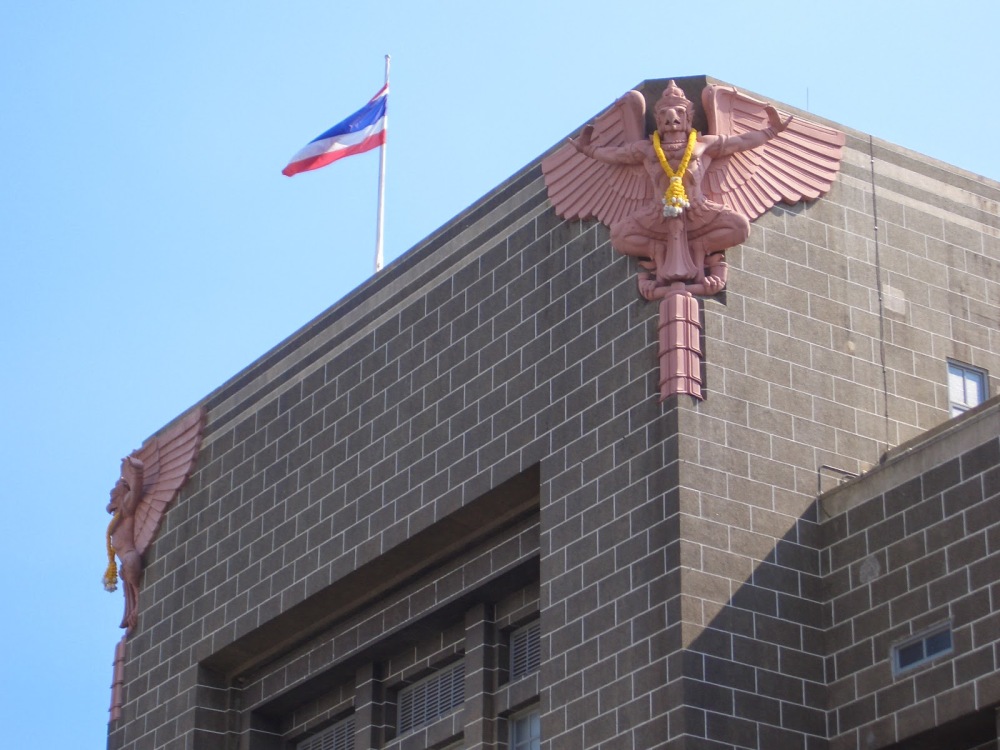
The pink Garudas on the corners of the Grand Postal Building, Bangkok
The Grand Postal Building is a splendid example of brutalist architecture given a scrub and a lick of paint. The imposing edifice dates from 1940 and its architects were Miw Jitrasen Aphaiwong and Phrasarot Ratnanimman. Thailand was going through a phase of influence from German and Italian architects. There is something distinctly Fascist about the style. Mussolini encouraged the monumental, echoing his own aggrandisement and his revival of nationalist values. Examples of fascist brutalism can be seen in parts of Rome, especially in the EUR district. It was a short-lived style. Monumental, heavy, foursquare, with lots of muscular athletes: these are its trademarks.
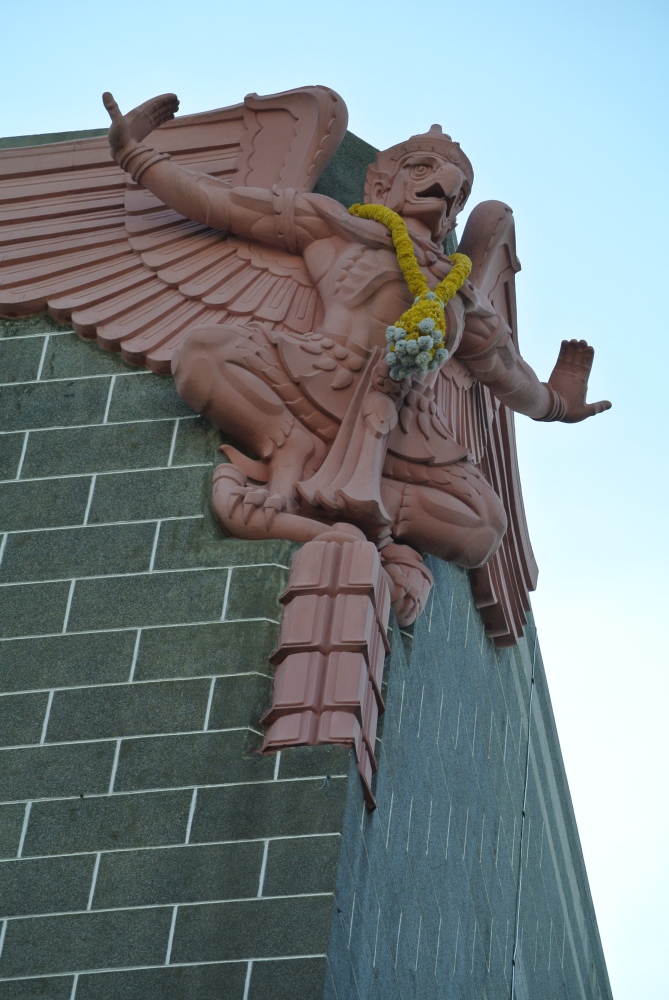
The man-bird Garuda overseeing the Central Post Office building in Bangkok
The Khana Ratsadon คณะราษฎร or People’s Party was in power in Siam/Thailand at the time, having wrested the country from absolute monarchy in 1932. Field Marshal Plaek Phibunsongkhram was Prime Minister and virtual military dictator from 1938 to 1944 and 1948 to 1957. It was an architecture seeking to marry national identity and European influence. A number of up and coming Thai architects of the day had been trained in Germany and Italy.

Workers of Christiani & Nielsen in front of the Democracy Monument in 1940
Also in 1940, Christiani & Nielsen (Thai) Public Company Limited completed construction of the Democracy Monument. In 1941 Phibun had the Victory Monument erected to commemorate battles with the French in Cambodia and Laos. It was all about shaping the modern state with the twin pillars of democracy and victory.
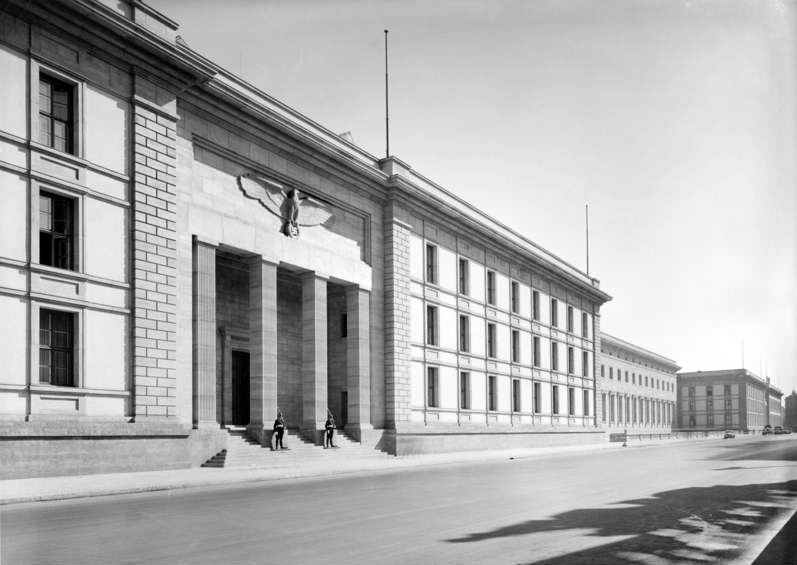
The Reichchancellory in Berlin, 1930s
I used to head down to the Central Postal Office late in the evening in the 1980s. At the time it was run by the Communications Authority of Thailand. The international phone exchange was open until midnight, or perhaps all night. There was often an interesting flora and fauna around the telephone booths. You had to book your call in advance and were directed to a booth. When time was up the operator would interrupt before cutting you off. It didn’t come cheap. I didn’t at all notice the architectural distinction of the building then. It was usually dark, swimming in that sombre fug that obscured Charoen Krung day and night.
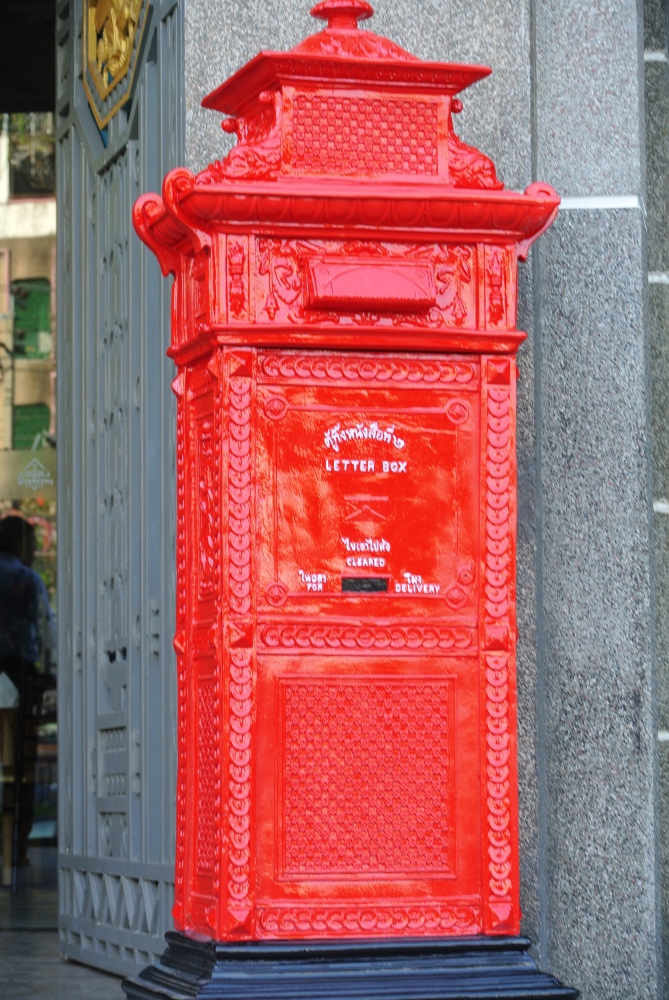
Old-style Siamese letterbox
But now I love it. What you see is what you get. The grey greenish stone is pointed in white. The windows recessed, lacking adornment. The ground floor has a blockhaus look. Everything tells you the army’s in charge, or the army’s proxies. The boys are back in town and nobody’s going to mess with them. It was a short-lived style, as I said.
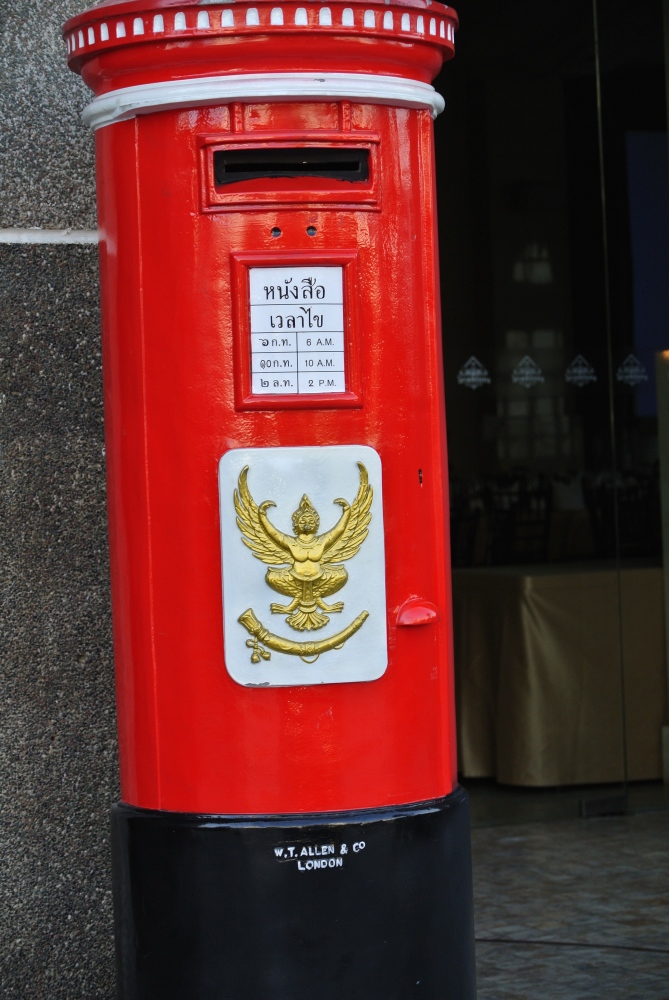
Another old Siamese postbox, courtesy of W. T. Allen, London
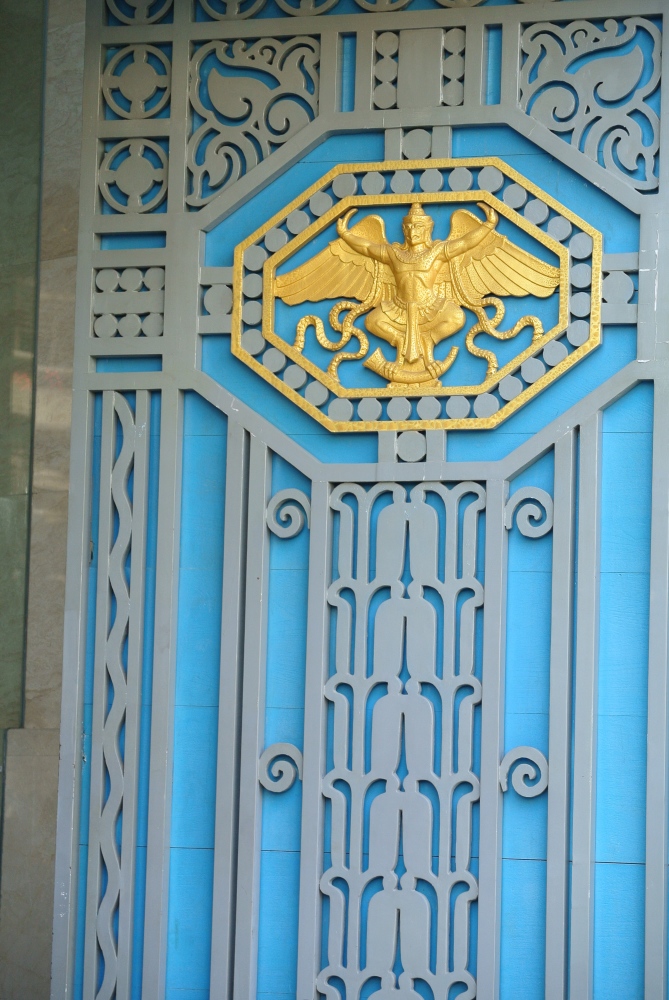
Fine ironmongery on the main doors of the Central Post Office

The Bangkok Central Post Office in 1940


8 thoughts on “Bangkok Brutalism: Grand Postal Building”